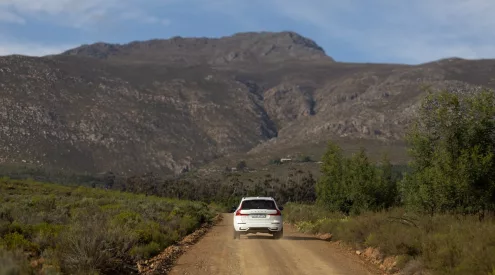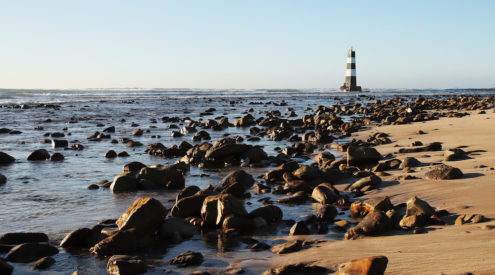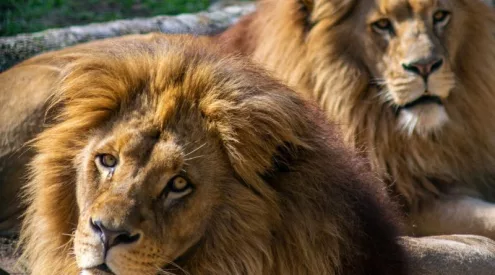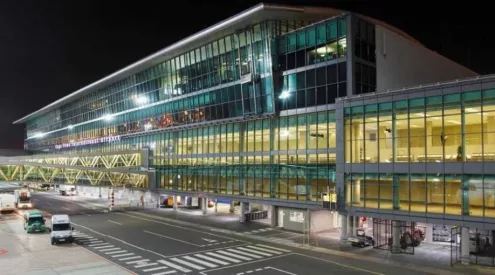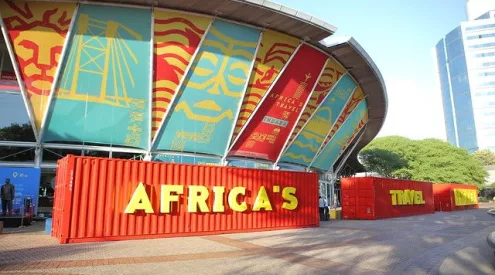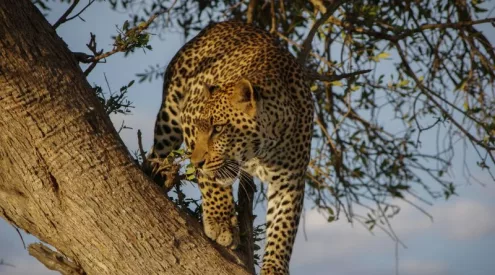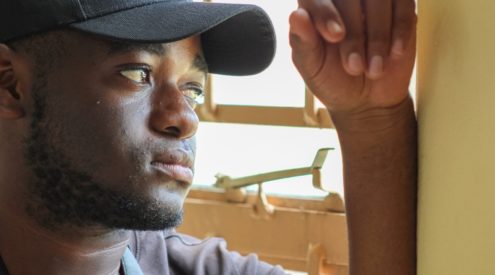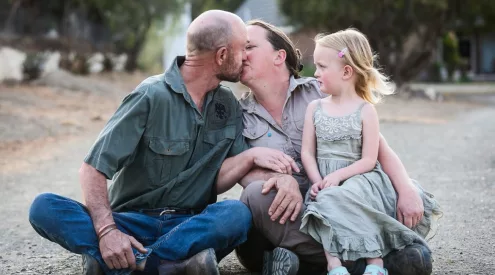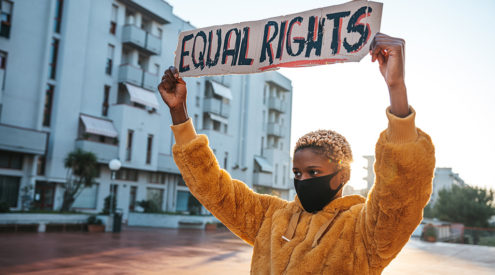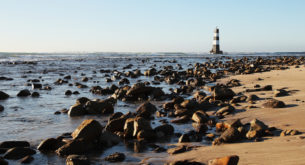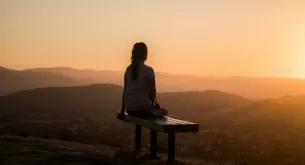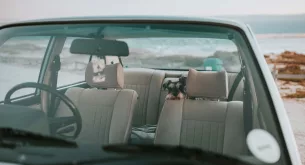We need to visit the places we want to protect; if we don’t there’s no incentive for those who own them to protect them for us.
Last year I spent some time in northern Kruger’s Makuleke Contractual Park. The name is relatively new, and you may know it better as Pafuri – the narrow strip of land at the very top of Kruger, right on the border with Zimbabwe. If you’ve been, I won’t have to tell you it’s one of the most beautiful and varied bushveld destinations in South Africa, loved for its birdlife, fever-tree forests and the iconic Lanner Gorge. What you may not know is that this slice of riverine bush between the Limpopo and Luvuvhu rivers is a private concession, owned by the Makuleke community and leased to private operators who run low-density safaris and ranger-training facilities.
The area is also known for its walking trails – which is why I was there. Keen as ever, I’d arrived a day before the other guests, and so on that first morning it was just my two guides and I who set out for a dawn walk along the Luvuvhu. It was early, the coffee was only just kicking in, and I was startled when we rounded a bend in a beautiful, dry tributary to find a young elephant bull keeled over on the sand. While I mooched around upwind, there was some discussion as to what had killed it. Anthrax? A botched poaching attempt? A wounded casualty from the hunting concession to the north?
The way they were talking, the latter seemed a reasonable option and it took a few moments to sink in. It was a surprise to learn there were hunting concessions a few kilometres from where we stood.

A dead elephant in the Pafuri / Makuleke concession. The unfortunate young bull seems to have died from anthrax.
Researching the area a few days before, I’d found a map of the Great Limpopo Transfrontier Park (GLTP) on the Peace Parks website. Pafuri is labelled just off-centre, and neat, green shading sweeps across the map, incorporating large sections of western Mozambique, southern Zimbabwe and all of Kruger. The map legend is unmistakable: north of Kruger is clearly marked within the transfrontier conservation area. There’s no sign of hunting concessions or even villages, no minor roads or farms. Looking at that map, you’d think the whole area was uninhabited: a paradise for wildlife and eco-tourism.
The map’s simple shadings obviously hid a far more complicated story. It revealed nothing about the people living there or the strategies they’d adopted to manage their land.
And it is their land. Local people have lived in the area for generations, and the ambitious undertaking that is the 37 572-square-kilometre GLTP (a touch smaller than Switzerland), encompasses numerous communities. The Makuleke, for instance, lived in Pafuri before being forcibly relocated in 1969. For 29 years, their land was incorporated into Kruger and only returned to the community in 1998. ‘The Makuleke own the land title and commercial development rights,’ explained Chris Roche, my guide from Wilderness Safaris, which runs the largest lodge in the area. ‘Kruger manages conservation activities and since 2003 the community has received eight percent of all tourism revenue from private operators like us.’
‘And what happened between 1998 and 2003?’ I asked.
‘Primarily trophy hunting,’ replied Chris. ‘It was a means to generate base capital for the community. Now, this practice is restricted to areas north of the Limpopo River in Zimbabwe, and west of Kruger in Makuya Game Reserve.’
Hunting concessions within a conservation area? The concept made no sense to me, but as we left the elephant carcass behind, I considered the choices available to communities trying to make a living.
Subsistence and livestock farming were the traditional approaches, practised for generations in varying degrees of conflict with wildlife. Growing populations mean more domestic animals, more land clearing and more human-wildlife conflict. On the road to Pafuri Gate, the damage caused by livestock is easy to see. ‘It’s a conundrum,’ said Chris later that night. ‘Ultimately, human population growth and diminishing land resources are the problems; and finding solutions to human-wildlife conflict and development while balancing conservation agendas is difficult. We believe eco-tourism is a means of generating returns for communities and of integrating them meaningfully into the business cycle.’

Looking south towards the Luvuvhu River in the Pafuri/Makuleke contractual park in northern Kruger National Park. Photo by Chris Davies.
But eco-tourism requires capital investment way beyond the reach of most small communities. If they’re unable to form partnerships with private business or government, other options must be found. Hunting is an emotional topic with strong views all round, but there’s no doubt it generates revenue.
Back in 2007, Peter Lindsey and colleagues published a peer-reviewed paper in the journal Conservation Biology. They estimated that ‘trophy hunting generates gross revenues of at least US$201 million a year in sub-Saharan Africa, from a minimum of 18 500 clients’. They went on to say that with the onset of land redistribution in Zimbabwe, tourist occupancy fell by 75 percent, whereas trophy-hunting revenues dropped by only 12,2 percent.
Revenue is an ugly argument, however pragmatic, and many will counter that it’s outweighed by long-term conservation concerns. There’s also no guarantee that money made through hunting finds its way into worthwhile community projects.
But for struggling communities in southern Zimbabwe, even a little revenue is better than none at all. When no investment exists for pricey safari lodges and destructive farming is the alternative, hunting concessions seem an obvious option.
I’ve looked at that GLTP map many times since returning from Pafuri. It’s an ambitious project, and with communities, governments and private business all needing to co-operate seamlessly, it’s perhaps one of the grandest acts of wishful thinking I’ve ever seen. But that doesn’t mean I wouldn’t love to see it work, and I’ve come to the conclusion that the best, perhaps the only, way to give it a chance is simply to visit.
In Pafuri, eco-tourism is supporting a community and enabling wildlife to be managed in the way I love to experience it. And if any new trails or camps open in southern Zimbabwe I’ll be the first to support them, even if it takes years for the bush to recover to the standards south of the Limpopo. We need to visit the places we want to protect; if we don’t there’s no incentive for those who own them to protect them for us. Communities have every right to survive; if eco-tourism can bring them revenue and protect a truly beautiful wilderness at the same time, then I want to be a part of it.
Want to know what it’s like to be a walking trails guide in the Pafuri/Makuleke concession? Follow James Bailey’s year-long adventure here. And if you want to visit the Pafuri yourself, here’s all the information you need to book your walking safari.
P.S. I found out subsequently that the elephant we stumbled across had died from anthrax, not poaching. Still, scant comfort considering the plight of these threatened animals.
This story first appeared in the April 2014 issue of Getaway Magazine.



